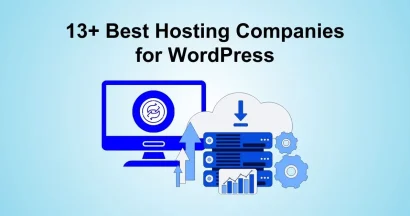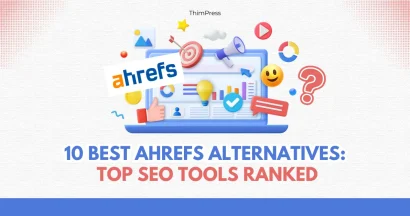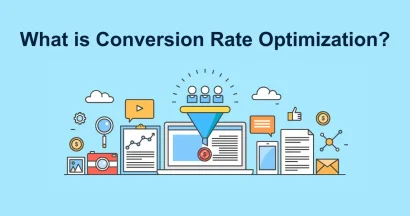Writing search engine Optimized content is the best and perhaps the only way to continue getting patronage to your old posts. All the work put into building a beautiful and modern looking website and choosing the best hosting services only to find your old posts gathering dust in a corner of the Google search results is quiet heartening. This is where search engine optimization comes in.
A search engine views your posts as webpages and ranks them. This gives you the option to optimize them using specific keywords and techniques for the search engine to take note. The ultimate aim of SEO is to get the best ranking on SERPs. This means that we need to get certain important things covered to get that SEO friendly page.
In this article, I will share with you, some important tips to write SEO-optimized content that will keep both the search engines and the users happy.
Note: If you don’t know much about SEO overview, check this article first What Is SEO, And Why Is It Important?
Optimized Content For Your SEO Website
1. Keyword Research
One of the most important component to SEO writing which needs to be given its due diligence.
Keyword research is the process of finding the search terms that people use to search for specific things in search engines. A keyword is any word that has a considerable amount of search volume.
A) Short tail Keywords: Short keywords are those that are 1-3 words long. Ex: SEO optimization tips.
B) Long Tail Keywords: Specific keywords that are three words or longer. Ex: how to write SEO content.
Long tail keywords are more lucrative as it will drive more targeted traffic thereby increasing your chances of ranking in the first page.
Where to start?
Here are some tools that can help you start on keyword research.
A) SEMRUSH: It is an online tool that shows the keywords and their rankings for all the URLs of your site. One option would be to explore the data presented to you about related sites in your niche.
B) Google instant search: Using Google’s auto suggest, you can find related search terms in your niche. See the position of your competitors on the results page and figure out keywords from their meta-description.
C) Latent Semantic Keywords: They are related keywords or synonyms. LSI Graph is a tool that generates LSI keywords automatically from your keyword. If you could include these related keywords in your content, it would help your SEO greatly.
Remember, over use of these keywords (keyword stuffing) is a bad idea. The articles will be of bad quality and would alert Google bots as spam. We recommend to keep the use of keywords natural.
2. Post Title and Meta Title
Post title: The title of your post that is visible to viewers on your website.
Meta title: Title as shown by search engines.
If you have not set a Meta title, the post title is taken. Title is the face of your post. It makes the search engine understand the context of your post. So it is imperative that you choose keywords that describe the context correctly. Make use of long tail keywords at the beginning.
Another idea is to add modifiers to the title. My personal suggestions depending on the content would H1 tag- be best, top, free, 2017, how to, use, optimize etc.
H1 tag- Your title should be written in the H1 tag only.
H2 tag or subtitles- It gives us the option to show more info as well as include more keywords. Make sure not to repeat the title here as it may confuse the search engine.
Some tools for title generation-
- SEOPressor
- HubSpot
- BlogAbout
3. URL
Don’ts:
- Do not use long URLs
- Do not use ugly URLs like domain.com/12#3@1==
Do’s:
- Use keywords in URLs to make it SEO-friendly.
- Make it easy to read and understand.
4. Meta Description
It is the text that is usually show by the search engine in the next 2-3 lines of the search results below the post title. It can be written creatively and informatively as it appeals to the viewer to click thereby increasing your click-through rate.
Meta description is the best place to put your keywords. If you haven’t written one for your previous posts, it’s time to add it now.
Tip: write a minimal number of words that deeply describes your article and explains to the user why he should click.
5. Content

SEO-optimized content is key to improving ranking on SERPs. You can’t possibly think of writing a super SEO-friendly post if your content is superficial and filled with improper language, written in an impossibly complex language.
For your post to show in search results even after a long time, you may have to dedicate a lot of time in making sure that your content is not shallow enough that it is just skimmed through rather than read with involvement.
Create content that is of high quality, appealing, vibrant, informational, and specific. Without well-tailored content, any and all website optimization tips will just be in vain.
Tips:
- Use the keywords preferably in the first 100 words of the content.
- Use the “image alt attribute”. Google cannot recognize images in your post. In order to overcome this, use image descriptions instead of some unrelated default names.
- Use interlinks that redirect to old, related posts in your blog. It is highly recommended.
- Use social media share buttons.
- Use expert essay writing services like WriteMyPaperHub to have your content written by someone who can do high-quality papers for you.
6. Mobile Friendly

Smartphone internet user base is the fastest growing network. So, if you ignore this, it is the biggest mistake you could make.
Adding to this is the fact that Google’s new mobile friendly algorithm is giving a huge boost to mobile based web traffic. This means that, if your website is mobile friendly, the algorithm will boost your ranking signals.
So, learning and implementing how to make your site user-friendly is a big plus!
7. Page Loading Speed

The time taken for loading your pages or posts will affect the bounce rate and thereby your search rankings.
Loading speeds not only depends on the hosting server but also on the size of your post i.e. whether you have included big images, videos and heavy themes. Make sure to keep post size to minimum.
Note: Check out 7 Tools To Optimize WordPress Website Speed for more tips about loading speed.
Wrap Up
The above exclusively compiled list of SEO-optimized content tips is guaranteed to make your posts reach a wider audience and boost your search result ratings, all the while keeping the content and website user-friendly.
Read More: Top 7 SEO Tactics To Dominate Your Competitors
Contact US | ThimPress:
Website: https://thimpress.com/
Fanpage: https://www.facebook.com/ThimPress
YouTube: https://www.youtube.com/c/ThimPressDesign
Twitter (X): https://twitter.com/thimpress


